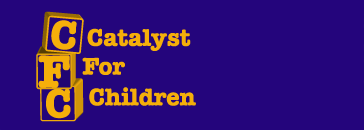 |
 |
||||||||
Venture Philanthropists It's an hour before the Charitable Council of Monterey County's annual board meeting at the posh Tehama Resort above Carmel Valley. Four members of the nonprofit group—which has funded a mobile dental health clinic, a foster care program for at-risk kids, and a mentoring programs for young girls and teenagers—have gathered at a slightly less elegant venue: the Monterey administrative offices for Planned Parenthood Mar Monte. Jane Parker, a vice president at Planned Parenthood and secretary for the Charitable Council, greets Ricki Mazzullo, executive director of the Council, with a glass of water. Dina Ruiz Eastwood, one of the original members of the Charitable Council board, walks in with Tom Melville, executive director of the county's Homeless Coalition, and vice president of the Council. "We haven't missed the photo-op, have we?" Melville laughs. "You were doing your hair, right?" Parker counters. Ruiz Eastwood runs her hand over her head. "You were joking about the photo op, right?" she says. "I've got an afro on top of a wet bun right now." Ruiz Eastwood, who took over last week as the Charitable Council's president, says that the board has had a uniquely direct involvement with its programs. "This was my first non profit experience," she says. "I've done other boards, but they are advisory. I'm sitting through those board meetings, going, ''Oh my God, it's just a bunch of legality BS.'' It's so different here. We are the deciders." The Charitable Council gets much of its money through grant writing and personal donations—such as Clint and Dina Eastwood's recent $25,000 gift. The Council has also run fundraising events like the Ruiz Eastwood-headed Eagle Invitational golf tournament, which just brought in $160,000. The group uses the money to fund programs, and also to act as a fiscal agent for smaller groups seeking grants. The nonprofit was formed in 1994, when Marie Glavin, then assistant director of the county''s Department of Social Services (DSS), sought help from outside the agency to create programs that had little hope of being funded internally, during the heyday of welfare reform. Glavin was later promoted to DSS director, and the council was dubbed the Human Services Charitable Council. Its offices were located within DSS. By the fall of 2000, the Charitable Council had hired a staff, moved into its own offices, and was looking for its own projects to add to the DSS programs. "Over the years we've still kept to the mission of looking for unmet human services needs in the county," Parker says. "But where those ideas were initially coming from the DSS, now we go out and ask the community or board members for input." Ruiz Eastwood says the Council was formed in a "crisis" year; "They had just cut out a large percentage of funding—DSS couldn't even afford to get delousing combs for kids taken into emergency foster programs." Ruiz Eastwood, who says she and her colleagues are jokingly referred to as ''venture philanthropists,'' says the council isn't under any direct oversight from DSS, although there was an adjustment when Glavin left and Elliott Robinson became director of Social Services. Robinson says that government doesn't have the money or authority to provide all of the human services a community needs. "I don't have room in my budget to provide karate lessons for kids in foster care," he says. "That kind of partnership—where the community steps in to provide services that the government isn't set up to provide—is the ideal vision of partnership." Mazzullo and the other board members don't claim that private non profit organizations can do a better job than taxpayer-funded government entities, but rather that they can sometimes provide quicker results with specific projects. "It's very difficult for a government agency to do strategic planning," Mazzullo says. "The people who are working—and they are generally overworked despite all the mythology to the contrary—it's very difficult for them to step outside their jobs and plan for something in the future. And so the only way they could do it was to get a community agency like ours to assist them. I'm not trying to say they couldn't do it, but it just takes so much more time." Mazzullo will go so far as to say that privately funded groups like the Charitable Council can influence systems in the long run. The Council's foster care project is being adopted as a national model, she says. Melville says the council's goal is to find a balance between influencing the larger issues and meeting specific, small goals—such as giving foster parents money to purchase piano lessons for their kids. With an individual project, he says, the Council likes to get in and out quickly. The bigger issues—such as abused or neglected children—are not just the responsibility of the government, he says. "It's a community problem, and the whole model now has shifted from a government-focused model to a community-based model." Robinson agrees that community and government partnerships are necessary, but refuses to assume that nonprofits will be able to single-handedly plug the leaks in needed services. "I believe in public services," Robinson says. "In the current environment [the public and private sectors] are both facing huge gaps. I'm concerned about the ability for us to jointly fill in the holes with the shrinking pool of philanthropic dollars and the shrinking pool of local government revenues. It's terrifying." Articles reprinted courtesy of Monterey
County Weekly |
Bad News for Local Women |
|||